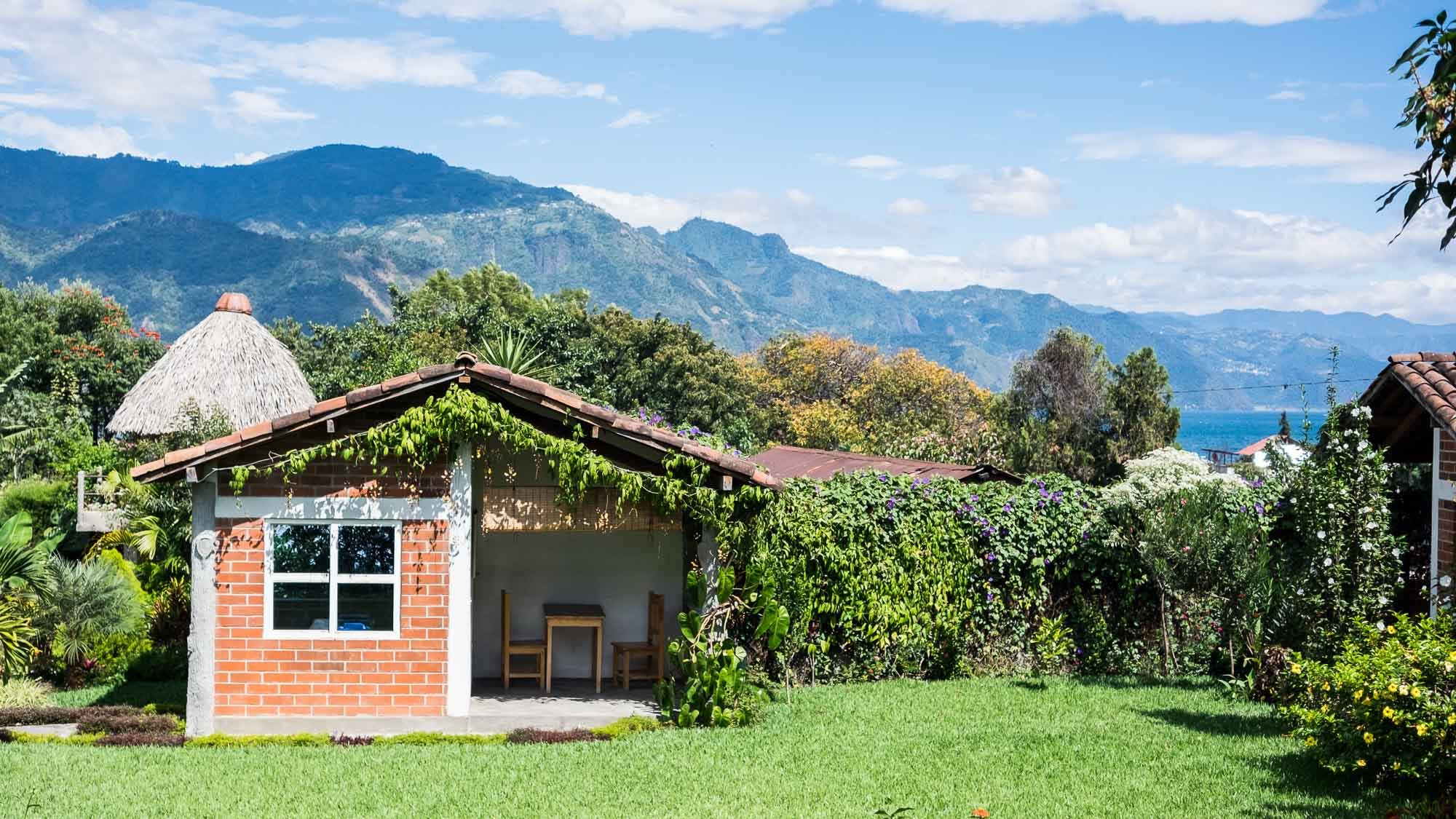
Three weeks of language immersion on the shores of "the most beautiful lake in the world".
Before Class
“Hola Maria! Buenos días!”
Nash and I skip down the stairs of our three-story concrete home in the center of San Pedro La Laguna.
We find our places at the kitchen table while exchanging the usual morning pleasantries with our host mother, Maria, as she brings us a pitcher of filtered water and our breakfasts.
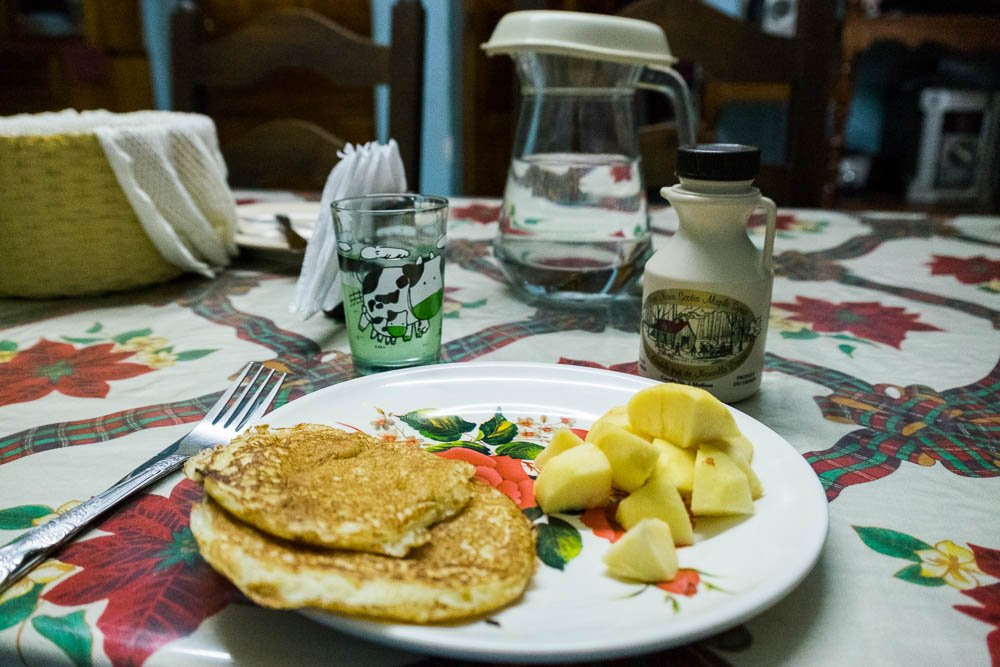
“¡Ooo, panqueques! ¡Piña! ¡Bananos!” I exclaim.
I find myself shouting the names of food a lot, along with animals and other basic nouns.
“Con permiso,” Maria excuses herself, before hollering up the stairs, “Norma! Norma!”
Her middle daughter comes down, tired after another late night studying for final exams. She’s almost done with another semester of her Saturday classes at a university several hours away, where she’s studying to become a social worker. On weekdays, she works as a secretary at her uncle’s Spanish school.
And she still musters the patience to explain everything to us in a comprehensible level of Spanish.
The eleven-year-old, Angela, is sleeping in. Ten years ago, winter vacations from school would have meant long days helping the mother in the house or the father in the fields, but now she spends them in a way familiar to most Americans - watching Disney channel, playing with friends, and occasionally racing around the house with a basketball. She also plays a mean game of memory.
We push back from the table and head out into the streets.
At 8am, the town is just stirring to life, vendors setting out their wares and tuk tuks whizzing by.
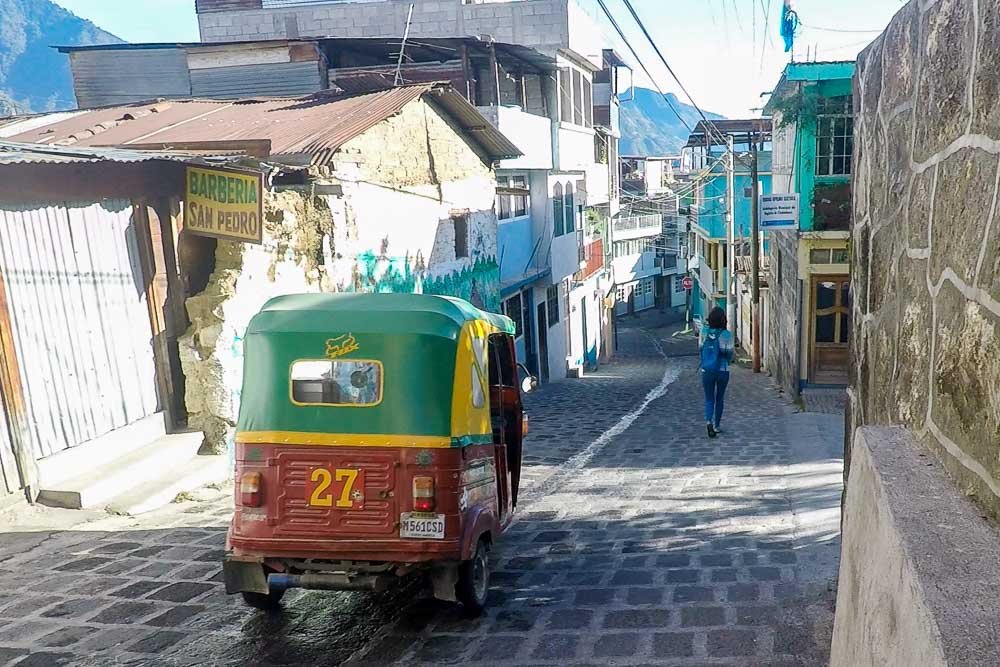
After college, I never thought I'd walk to school again, let alone to a school in Guatemala!
During Class
Our school, La Cooperativa, is about halfway down the hill to the lakeshore. It’s an oasis in the hustle and bustle of San Pedro, away from the exhaust-thickened air and trash-littered cobblestones.
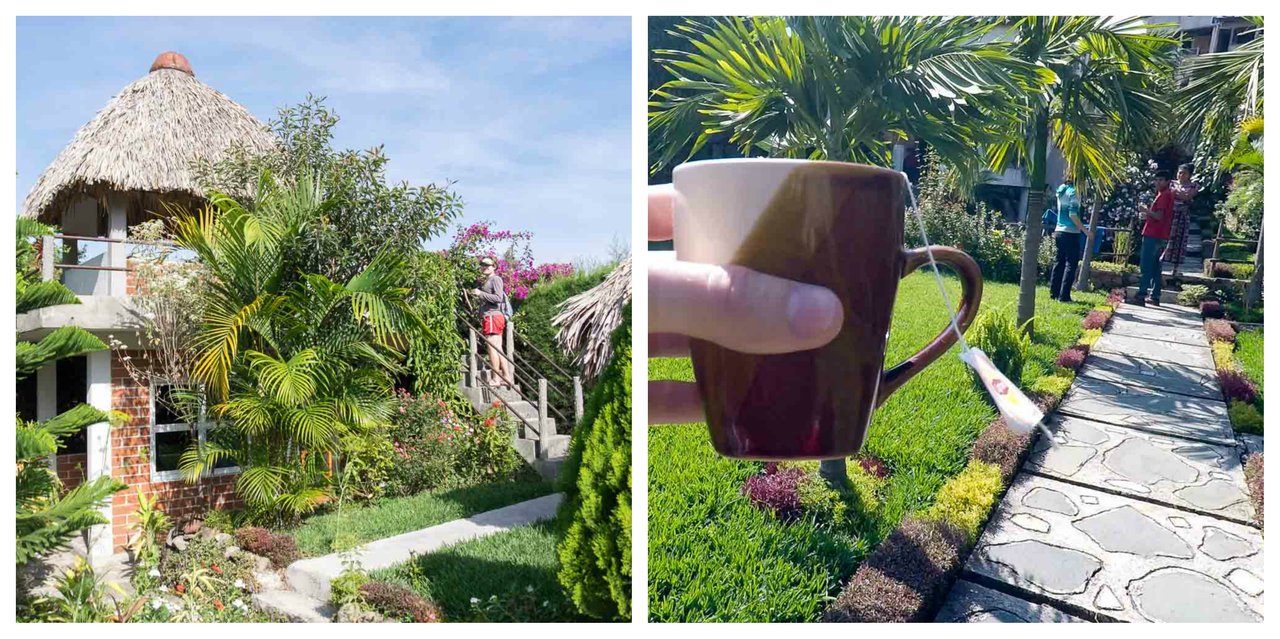
Nash and I fill our mugs with tea and part ways to the individual banana-leaf thatched palapas scattered throughout the garden.
Our four hours of private Spanish lessons, from 8 to 12 Monday through Friday, pass with only the thrum of hummingbird (colibri!) wings and the scuttling of lizards (lagartos!) to disturb us.
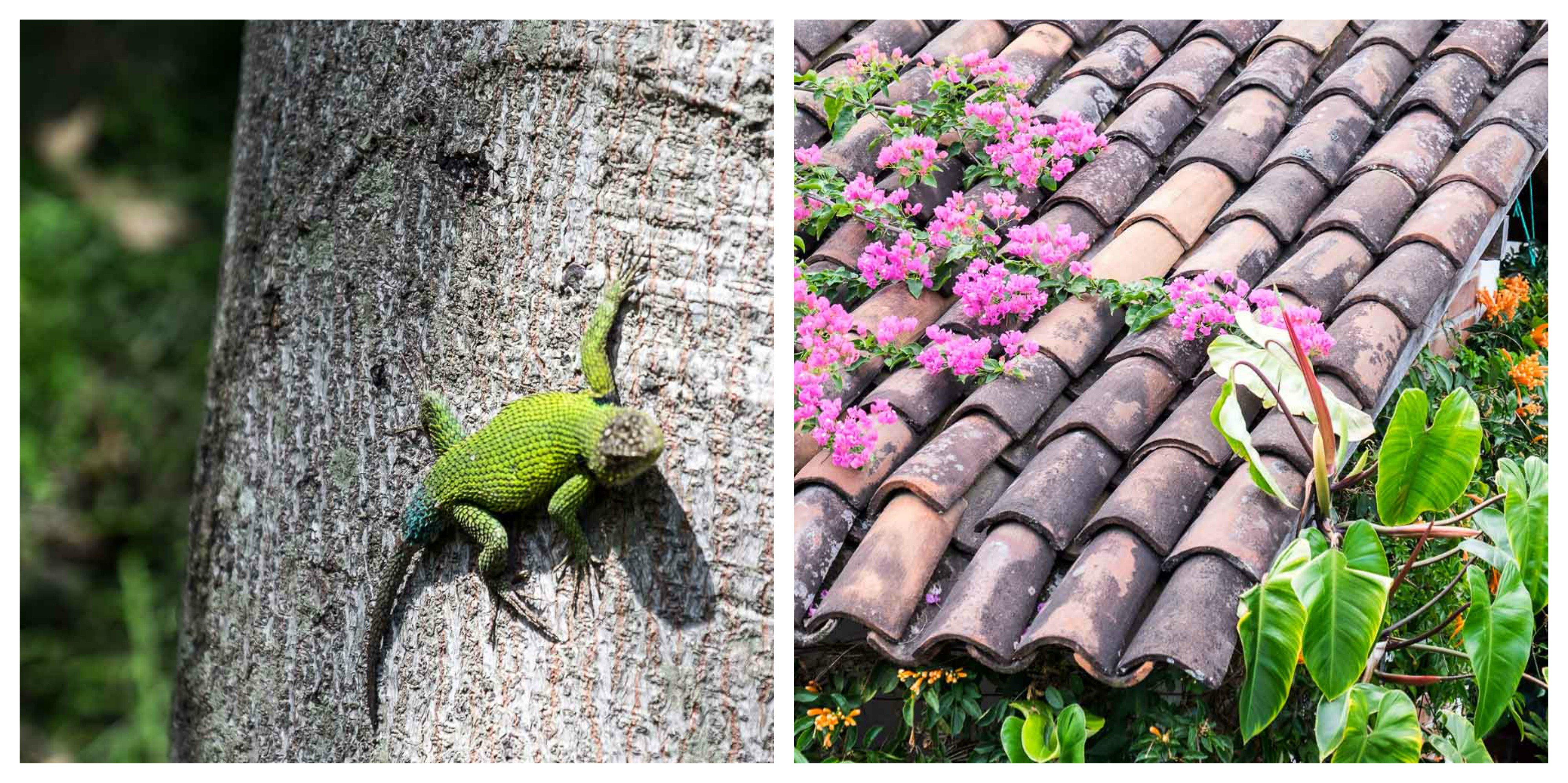
So this is what paradise looks like.
I have the advantage of years of high school Spanish rusting away in my brain, so the curriculum just needs to be refreshed and practiced.
My teacher Diego conducts our lessons like a conversational cultural exchange.
At nearly twenty-two years old, Diego has lived through a period of even more rapid change than the typical American millennial - after all, less than fifty years ago San Pedro didn’t even have electricity or concrete.
His life story represents the shift between Mayan tradition and the technological revolution.
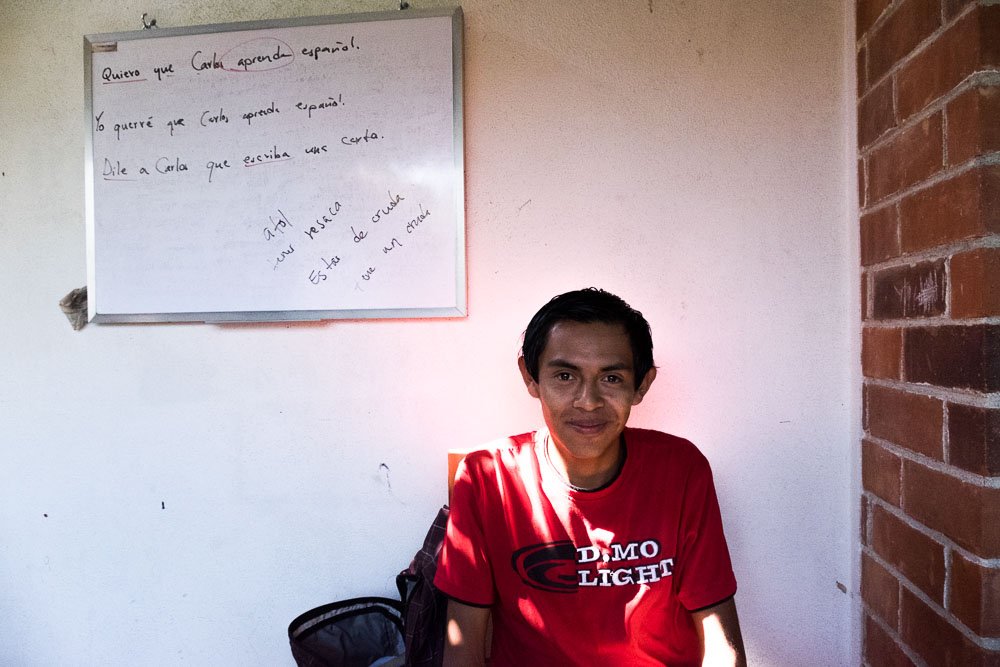
Diego
At birth, he was examined by a Mayan priest for signs of an innate gift for healing.
For centuries, these healers have learned their art through dreams and operate on a donation basis.
Diego swears by their efficacy, especially the local bone setter who once passed a piece of bone imbued with ancestral power over his broken limb. It healed within days.
And when his cousin went into shock following an accident, a shaman performed a ritual to return her spirit to her body. She was back to normal the next morning.
However, reliance on these traditional healers is lessening as access to modern medicine improves. Since most mothers now give birth in hospitals, Diego doesn’t know any young people preordained with the healing gift.
Diego’s parents also made the increasingly uncommon choice to only speak Tz’utujil as he grew up, meaning he learned Spanish as a second language once in school.
There are still twenty-one Mayan languages spoken in Guatemala, but their usefulness is fading now that commerce and social lives go beyond ethnic boundaries.
As evidence of this, most children in San Pedro chatter to us in Spanish.
There are also the more visible changes - as a male, Diego now only wears San Pedro’s traje tradicional on special occasions, borrowing the clothes from his deceased grandfather’s wardrobe. Diego describes the loose and colorful belted pants as hot and uncomfortable, though that doesn’t stop all the women from wearing full-length skirts of the same material every day.
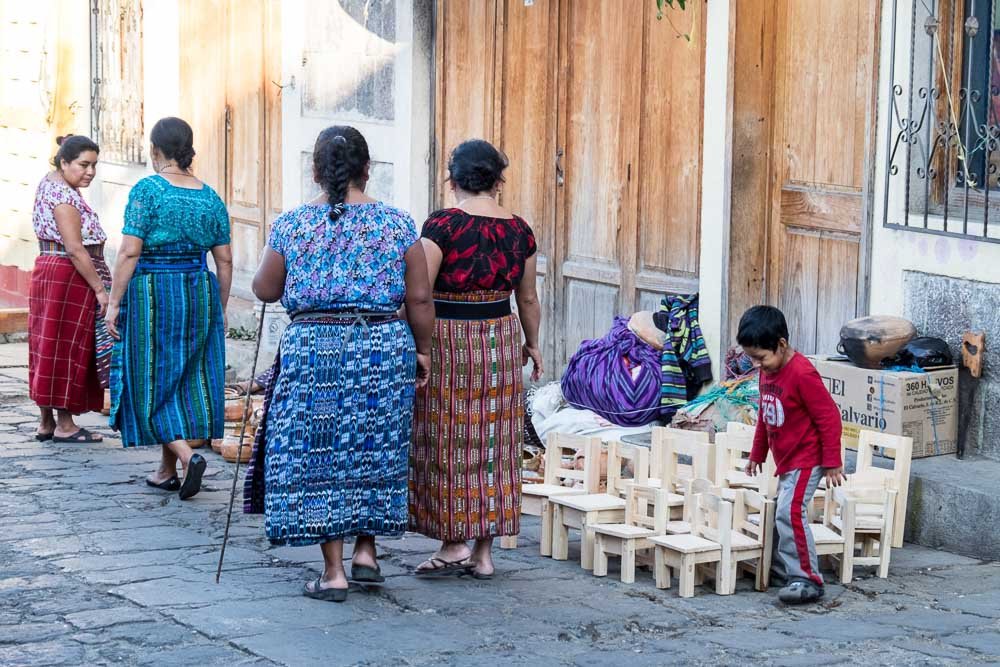
Some of San Pedro's traditional clothing. And tiny chairs!
Public education is now available for all children, but students aren't allowed to speak or ask questions in class. A foreign-run after-school program changed Diego's life, teaching him how to hold discussions and think for himself.
Now, he’s talkative, enthusiastic, and intensely curious about the world. And the internet is his primary window to that world.
He spends much of his free time on Youtube - watching documentaries, getting caught up in conspiracy theory videos, and keeping up to date with the popular Latin America channels, such as HolaSoyGerman and Luisito Comunica.
As a result, he’s developed an interest in video editing and now owns a GoPro and a laptop and is helping a friend start a Guatemalan tourism website.
After each weekend, he comes back with photos and tales of firsts from visits to Guatemala City - his first time at the movie theaters, his first trip to a zoo, etc.
He intends to keep collecting these firsts, from riding in an elevator to flying in an airplane.
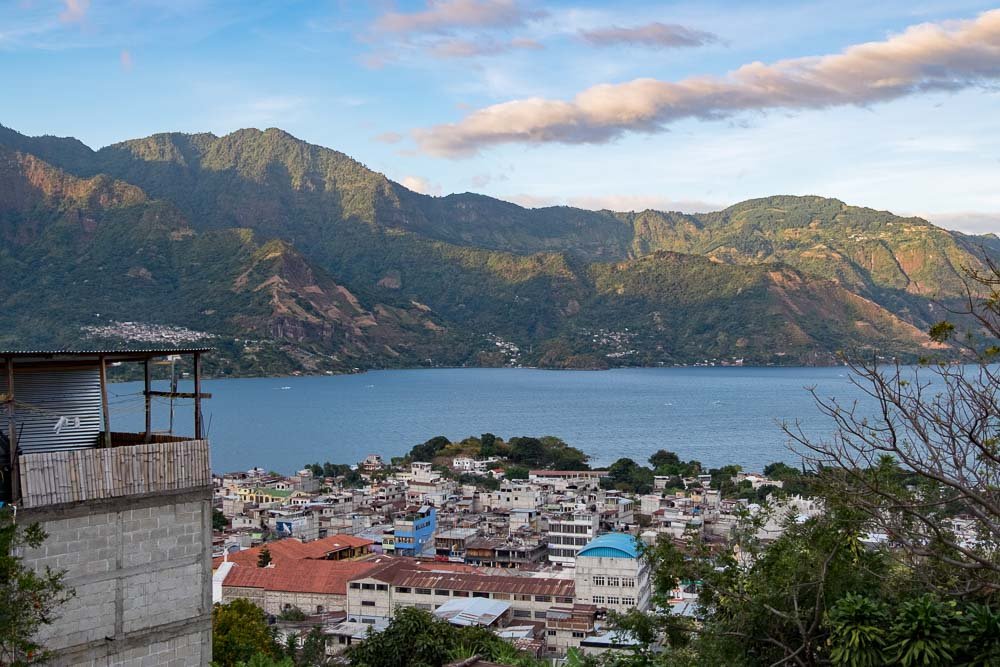
Many residents never leave San Pedro La Laguna - I can't see why! ;)
In return, I describe what it’s like living in a booming West Coast city on the cutting edge of technology, where people always push themselves to work harder, beat the competition, and earn more money.
“I’ve heard that Americans own a bunch of stuff they don’t even use - is that true?” Diego asks.
I burst out laughing, thinking of the days Nash and I spent trying to declutter his brother’s house before we left.
“You have no idea how true that is,” I say. “Weirdly, it’s how our economy works.”
As if to reinforce the guilt of that excess, during our 10:20 am break on this particular day (after a refill of tea and a snack of chuchitos from the market) we grab bags full of basic foodstuffs and deliver them to elderly residents.
This is one of five charity projects the school participates in with the help of our tuition money.
The others include building houses and providing kids with scholarships, school supplies, and sports equipment.
We’re joined by Nash and his teacher, Ligia, who is shy and serious. (Nash once tried to explain to her about dark humor and how death can be funny... I'm glad I didn't attempt that conversation!) But since meeting Nash, she laughs and socializes more.
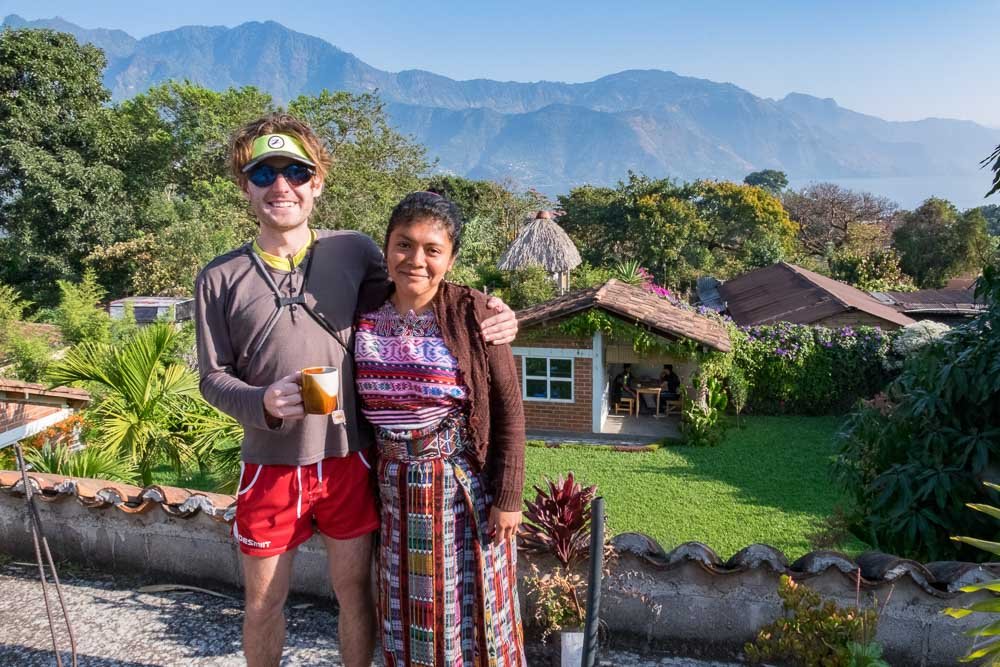
Nash and Ligia
“¡Aquí están tus huevos!” Nash announces as he enters one family’s stick home and hands over his bag.
The recipient of the eggs doesn’t speak a word of Spanish, but Nash’s enthusiasm is still felt and she thanks him in Tz’utujil: “Maltiyoox”.
After Class
In the afternoon, we skip lunch at home in favor of a smaller meal and more relaxed schedule. Nash and I head to BIG BURGER down by the lake, our favorite Mayan owned gringo restaurant.
As we sip on tea and sodas, we enter the day’s new vocabulary into our flashcard application and start trying to meet all our learning goals in the Memrise app. Whenever I get overwhelmed during the 100-word-long Rapid Rounds, I switch to reading my book.
It’s hardly a break, since it’s also in Spanish.
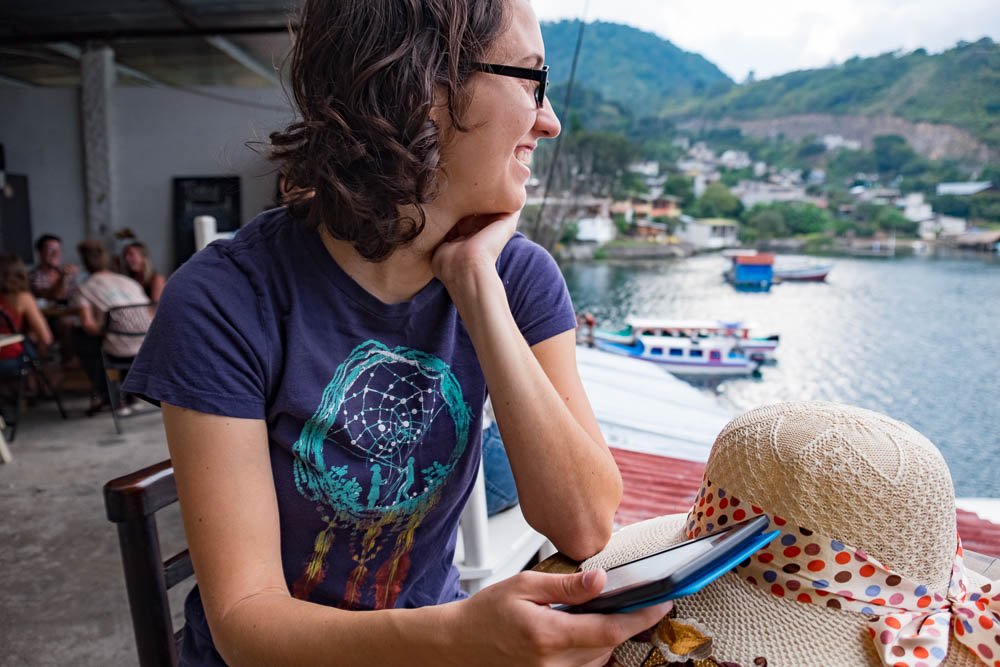
My brain is melting!
It’s about this point in the day that mental fatigue sets in. Our tempers grow short as headaches take over.
Nash, always eager for a deep conversation, is increasingly frustrated at not being able to express complex ideas in a foreign language. It doesn't help that we have no real reason to learn that language beyond my insistence that it’s fun and helps with travel.
We switch to speaking in English among ourselves, but my silly brain still tries to translate everything. I get distracted and shut down conversations before they can take off.
Language immersion is really freakin hard.
Fortunately, there’s nothing like manual labor to calm the mind. Back home, after a stop to buy a 12-cent chocolate covered banana, we shove all our dirty clothes in a drawer and climb the treacherous concrete stairs to our bathroom on the roof.
We take care not to close the door behind us, lest we find ourselves in another locked-on-the-roof incident wherein Nash has to ninja his way over a wall and into the stairwell to free us.
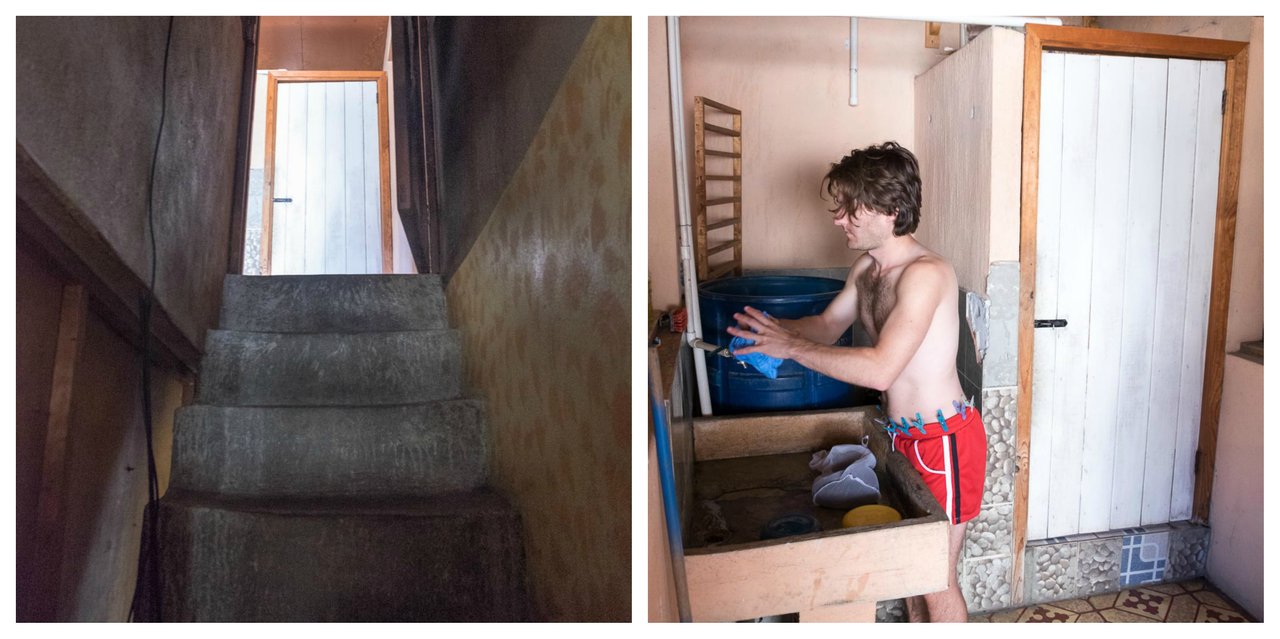
At the sink, we stand side-by-side in blissful silence, scrubbing away at each article of clothing and clipping them on the lines to dry.
We are mindful not to use too much water - the Rotoplas container is only refilled a couple times a week when water is trucked up from the lake.
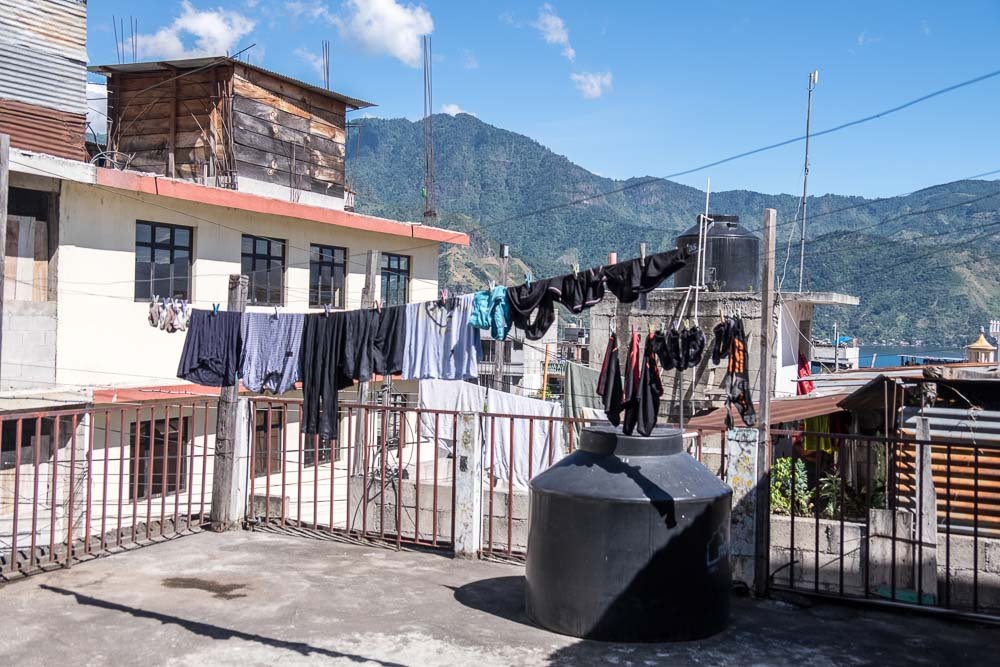
Every item of clothing we own except the ones on our back.
Dinner at 7 revolves around the basket of corn tortillas in the center of the table, which I use to scoop up some of the vegetables on my plate.
Guatemalan cuisine has little in the way of fat and spices, but Maria’s vegetarian dishes are still filling and healthy (and delicious!).
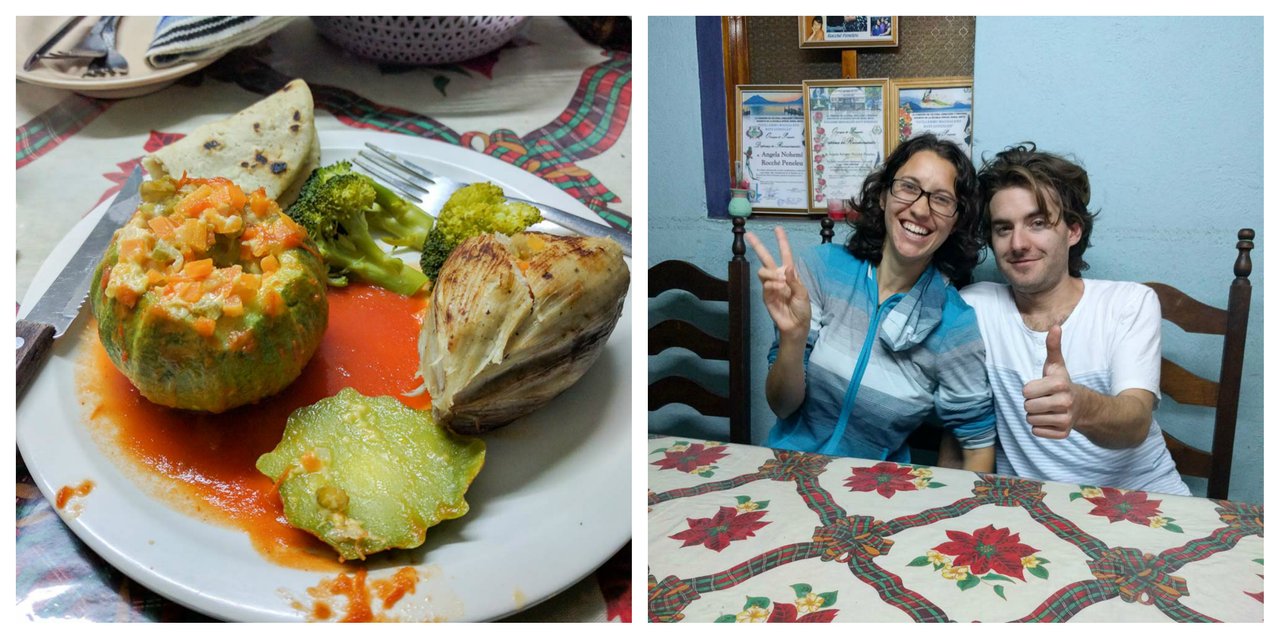
At the far end of the table, Maria’s Tzutzujil-speaking father smiles quietly and pours chilis over his plate. He’s the only permanent male resident in the house, since Maria’s husband Miguel works at a television station across the lake.
Angela pauses her animated chattering and cell phone gaming to hoist her baby cousin, Diego (not to be confused with my not-a-baby Spanish teacher), into her lap.
He’s deathly serious, his expression never quirking into a smile despite being the target of tickles and silly faces.
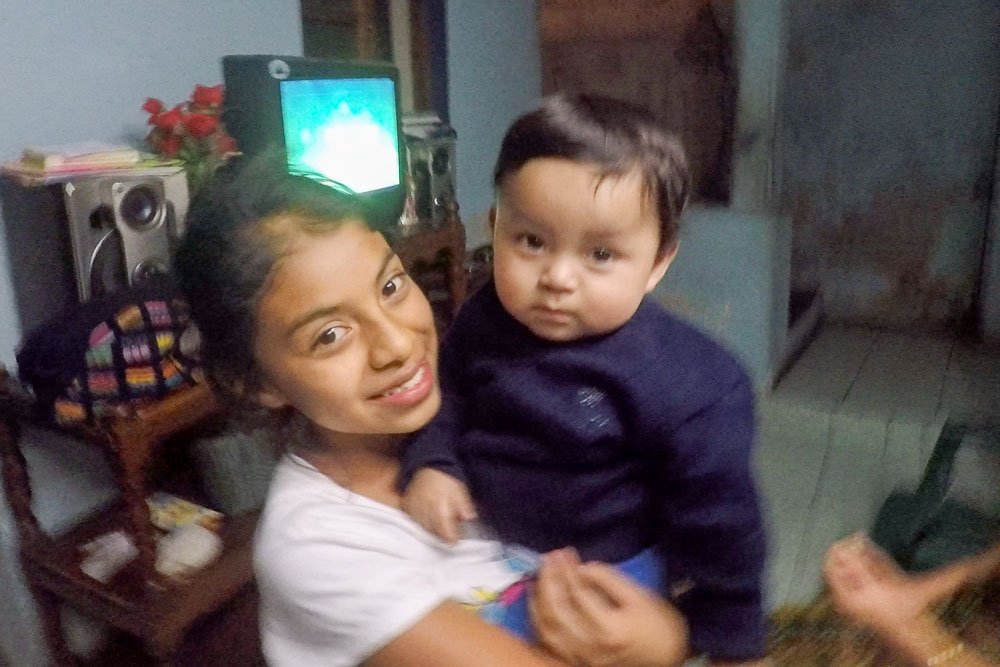
Angela and Diego
Meanwhile, Norma and Nash are exchanging song recommendations. Nash turns up his phone volume and throws his voice into a perfect imitation of Juanes - “Para tu amor lo tengo todo…”
Baby Diego watches Nash with big, unblinking eyes, but he’s the only one that keeps his composure. Maria, for one, bursts into giggles and gazes adoringly at my boyfriend.
“Katie, tienes mucha suerte,” she says.
As if I needed the reminder of how lucky I am - I’m swooning too.
After dinner, we fall asleep whenever we can, often during the quietest hours between midnight and 2 am. Sleep is precious - after all, you never know when you’re going to be woken up at 4am by a rogue mariachi band (more on that in another post).
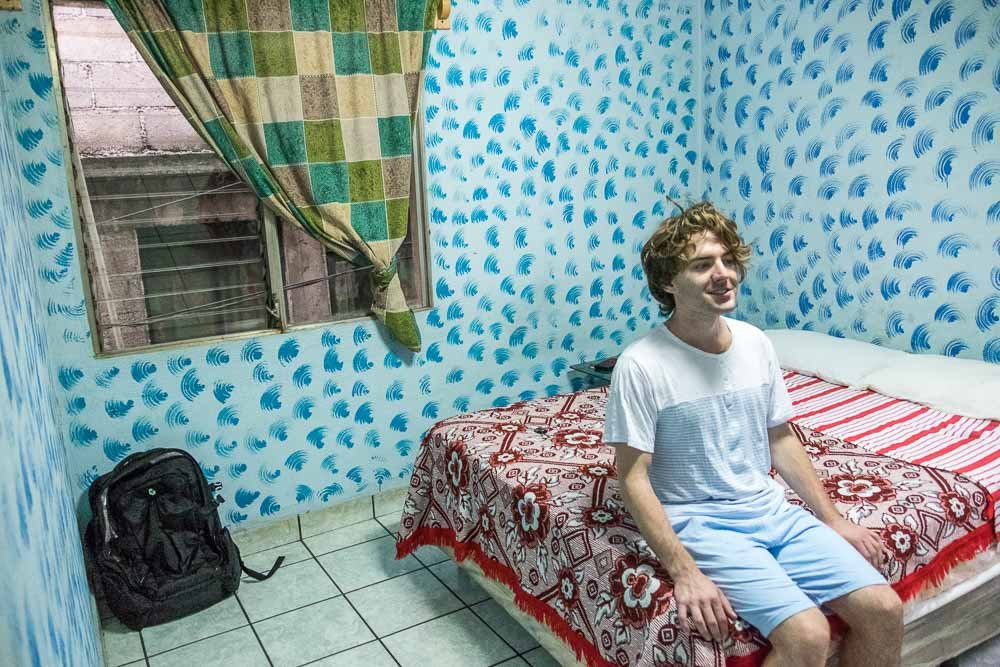
Our private bedroom.
At the end of three weeks of classes, our Spanish has certainly improved.
But more importantly, we’ve been able to use that language to get to know a group of friendly, fun-loving individuals whose lives would otherwise have been a mystery to us.
Even if sometimes the conversation is reduced to discussing our likes/dislikes, what our families are like, and reciting the names of food.
Thanks for reading! All the above words and photos are mine, and I also posted this story to my blog. If you liked it, please upvote and share and I will give you a virtual hug!
- Katie @therovingreader
More reads on Guatemala:
- Climbing One Volcano to Watch Another Volcano Explode. Meet Acatenango and Fuego.
- The Ultimate Guide to San Pedro La Laguna for Non-Partiers
- Any Given Sunday with a Guatemalan Family by @anomadsoul
- I Almost Went Trekking Through Rural Guatemala... Then All Hell Broke Loose
- More to come!
